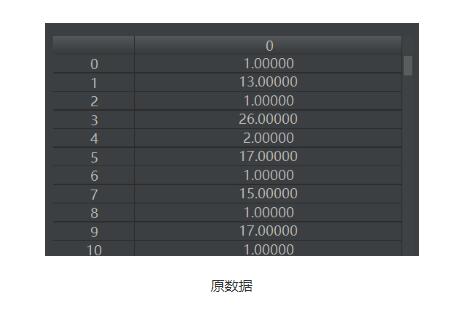開發(fā)一個(gè)封裝iframe的vue組件
VUE的基本組成單元,我看應(yīng)該是組件。用VUE開發(fā)前端項(xiàng)目,就是開發(fā)一個(gè)個(gè)組件,然后搭積木一樣,將項(xiàng)目搭建出來。組件包含在頁(yè)面,或者是更大的組件里面。在這里,組件與頁(yè)面的界限,好像并不明顯。事實(shí)上,對(duì)于單頁(yè)應(yīng)用,只有一個(gè)頁(yè)面。
組件的好處,一是可以加強(qiáng)復(fù)用;二是能夠?qū)⑻囟üδ芊庋b,利于調(diào)用;三是由于職責(zé)分明,組件高內(nèi)聚,組件間低耦合,利于系統(tǒng)功能的優(yōu)化、擴(kuò)展和維護(hù)。好處多多。
開發(fā)組件,主要有2部分內(nèi)容:1、組件內(nèi)部邏輯2、外部接口由于我這兩天弄的組件,里面包含有一個(gè)<iframe>,那么還有一部分工作內(nèi)容:3、iframe接口
一、組件介紹這是一個(gè)地圖插件。功能是展示地圖,以及接受外部命令,加載圖層、繪制圖形等相關(guān)操作。地圖采用arcgis for js實(shí)現(xiàn)。由于我們過去開發(fā)的項(xiàng)目,地圖操作有一些積累,不過并沒有前后端分離,沒有采用VUE或REACT,還是傳統(tǒng)的WEB頁(yè)面。因?yàn)闀r(shí)間緊,也想直接復(fù)用以前的成果,于是考慮用<iframe>承載地圖頁(yè)面,封裝在VUE組件里,由組件對(duì)接外部命令并與iframe里的地圖頁(yè)面交互。
二、組件內(nèi)部結(jié)構(gòu)及邏輯1、代碼組織結(jié)構(gòu)
Map.vue
<template> <div class='map-container'> <!-- 承載地圖頁(yè)面 --> <iframe :src='http://m.baoyu77737.com/bcjs/src' ref='iframe' @load='iframeLoad'></iframe> </div></template><!-- Add 'scoped' attribute to limit CSS to this component only --><style scoped='scoped'> .map-container iframe{ width: 100%; height: 100%; border: none; }</style><script> import config from ’../../vue.config’//里面有路徑信息 let iframeWin = null;//私有變量 export default { props:[’size’],//純測(cè)試,沒啥用,對(duì)應(yīng)<Map ref='map' size='100'></Map> data() { return {src: ’’,//地圖頁(yè)面地址isLoaded: false,//地圖頁(yè)面是否加載完畢iMap: null,//地圖頁(yè)面暴露出來的,供外部訪問的對(duì)象require: null//arcgis的require函數(shù),用于引用自定義插件。我們過去寫了不少自定義的地圖插件 } }, created() { this.src = config.publicPath + ’map.html’ }, mounted() { //監(jiān)聽iframe的消息 window.addEventListener(’message’, this.handleMessage) iframeWin = this.$refs.iframe.contentWindow }, methods: { iframeLoad() {this.isLoaded = true;window.console.log('map is ready') }, async handleMessage() {//接收來自iframe的消息this.require = iframeWin.require;this.iMap = iframeWin.iMap; }, loadLayer(nodes,servers){this.iMap.layerHandler.load(nodes,servers); }, isReady(){return this.isLoaded; } } }</script>
有關(guān)組件的結(jié)構(gòu),比如
export default { props:,//標(biāo)記里的屬性 data() {//公共變量 }, created() {//加載時(shí)? }, mounted() {//加載完畢時(shí) }, methods: {//公共方法 }}
export代表了這是對(duì)外。所以里面的屬性、變量、方法,都可以被外部訪問。如果想私有,應(yīng)該在export之外定義。如本例:

像這類簡(jiǎn)單的介紹,在網(wǎng)上怎么也搜不到。vue的中文站點(diǎn),陳舊,內(nèi)容支離破碎,對(duì)初學(xué)者極不友好,加重了學(xué)習(xí)的成本。
三、iframe接口組件Map.vue與里面的iframe是怎么通信的呢?通過系統(tǒng)消息和直接訪問iframe的對(duì)象。直接訪問iframe里的對(duì)象有個(gè)前提,就是不能跨域。
iframe承載的地圖頁(yè)面map.html
<!DOCTYPE HTML PUBLIC '-//W3C//DTD HTML 4.01//EN' 'http://www.w3.org/TR/html4/strict.dtd'><html> <head>... </head> <body> <div id='map'></div>... </div> </body></html><script src='http://192.168.0.200/pubzy211/arcgis_js_api/3.19/init.js'></script><script type='text/javascript'> var iMap = {}; //外部引用接口 require([ 'esri/config', 'esri/map', 'esri/geometry/Extent', 'esri/SpatialReference', 'layerlib/LtLayer', 'dojo/dom', 'dojo/_base/array', 'dojo/parser', 'dojo/domReady!' ], function( esriConfig, Map, Extent, SpatialReference, LtLayer, dom, arrayUtils, parser ) { //map var map = ... /* 外部接口 */ iMap = { map: map, legend: legend, home: home, tipDialog: tipDialog, toggle: toggle, overviewMap: overviewMap }; iMap.drawHandler = ... iMap.layerHandler = ...; iMap.centerAt = ...; iMap.clear = ...; iMap.restoreView = ...; // 向父vue頁(yè)面發(fā)送加載完畢信號(hào) window.parent.postMessage({ cmd: ’mapIsReady’, params: { success: true, data: true } }, ’*’); /* end of 外部接口 */ });</script>
地圖組件Map.vue對(duì)應(yīng)iframe部分,詳見一.2中的代碼
export default {。。。 mounted() { //監(jiān)聽iframe的消息 window.addEventListener(’message’, this.handleMessage) //獲得iframe的window對(duì)象 iframeWin = this.$refs.iframe.contentWindow }, methods: { iframeLoad() {this.isLoaded = true;window.console.log('map is ready') }, async handleMessage() {//接收來自iframe的消息this.require = iframeWin.require;this.iMap = iframeWin.iMap; }, loadLayer(nodes,servers){ //加載圖層this.iMap.layerHandler.load(nodes,servers); } } }四、外部接口
Map.vue是一個(gè)組件,它要跟它所在的組件或頁(yè)面進(jìn)行通信。
現(xiàn)在,Map.vue放在了一個(gè)容器頁(yè)面Home.vue(即測(cè)試頁(yè)面)里,里面還有一個(gè)命令組件Layer.vue。點(diǎn)擊命令組件里的按鈕,地圖要做出相應(yīng)的響應(yīng)。其中的原理如下:
命令組件的按鈕點(diǎn)擊后,發(fā)射信息到容器頁(yè)面,然后容器頁(yè)面調(diào)用地圖組件的方法。
測(cè)試頁(yè)面Home.vue
<template> <div id='app1'> <div id='map-container'> <div>地圖組件</div> <Map ref='map' size='100'></Map> </div> <div id='layer-container'> <div>其他組件</div> <Layer @loadLayer='loadLayer' @loadCloud='loadCloud' @clear='clearMap'></Layer> </div> </div></template><script> import Map from ’../components/Map.vue’ import Layer from ’../components/Layer.vue’ export default { name: ’App’, components: { Map, Layer }, methods:{ loadLayer(nodes,servers){//加載圖層let map = this.$refs.map;map.loadLayer(nodes,servers); }, loadCloud(data){//加載衛(wèi)星云圖let map = this.$refs.map;map.require(['drawlib/Cloud'], function (Cloud) { let iMap = map.iMap; let cloudId = ’cloud’; let cloud = new Cloud(iMap.map); iMap.drawHandler.push(cloudId, cloud); cloud.draw(data,cloudId);}); }, clearMap(){//清除let map = this.$refs.map;map.iMap.clear(); } } }</script><style>。。。</style>
命令組件Layer.vue
<template> <div class='layer-container'> <button @click='loadLayer'>加載圖層</button> <button @click='loadCloud'>衛(wèi)星云圖</button> <button @click='clear'>清除</button> </div></template><script> export default { methods: { loadLayer() {let nodes = ...let servers = ...this.$emit('loadLayer', nodes,servers) }, loadCloud(){let data = ...;this.$emit('loadCloud', data); }, clear(){this.$emit('clear'); } }, }</script><style scoped='scoped'>。。。</style>
注意命令組件發(fā)射消息中指定的方法,在容器頁(yè)面中都有相關(guān)的屬性與之對(duì)應(yīng):
命令組件loadCloud(){ let data = ...; this.$emit('loadCloud', data);},容器頁(yè)面<Layer @loadLayer='loadLayer' @loadCloud='loadCloud' @clear='clearMap'></Layer>五、運(yùn)行結(jié)果

其他組件要與地圖組件交互,中間要通過容器頁(yè)面,其他組件與地圖組件并沒有直接交互。這其實(shí)是一種命令模式。好處是其他組件和地圖組件解耦,沒有耦合在一起,意味著互不影響。這有利于地圖組件本身的擴(kuò)展和優(yōu)化。缺點(diǎn)的話,每個(gè)東東都要通過容器頁(yè)面轉(zhuǎn)發(fā),容器頁(yè)面代碼可能會(huì)有冗余,有些方法根本就是個(gè)傳聲筒,給人的感覺是重重復(fù)復(fù)的寫,意義不太大。
以上就是開發(fā)一個(gè)封裝iframe的vue組件的詳細(xì)內(nèi)容,更多關(guān)于封裝iframe的vue組件的資料請(qǐng)關(guān)注好吧啦網(wǎng)其它相關(guān)文章!
相關(guān)文章:
1. python實(shí)現(xiàn)讀取類別頻數(shù)數(shù)據(jù)畫水平條形圖案例2. python中PyQuery庫(kù)用法分享3. python操作數(shù)據(jù)庫(kù)獲取結(jié)果之fetchone和fetchall的區(qū)別說明4. 關(guān)于HTML5的img標(biāo)簽5. PHP獲取時(shí)間戳等相關(guān)函數(shù)匯總6. python 爬取嗶哩嗶哩up主信息和投稿視頻7. ASP.NET MVC前臺(tái)動(dòng)態(tài)添加文本框并在后臺(tái)使用FormCollection接收值8. CSS3實(shí)現(xiàn)動(dòng)態(tài)翻牌效果 仿百度貼吧3D翻牌一次動(dòng)畫特效9. php使用正則驗(yàn)證密碼字段的復(fù)雜強(qiáng)度原理詳細(xì)講解 原創(chuàng)10. JSP+Servlet實(shí)現(xiàn)文件上傳到服務(wù)器功能

 網(wǎng)公網(wǎng)安備
網(wǎng)公網(wǎng)安備